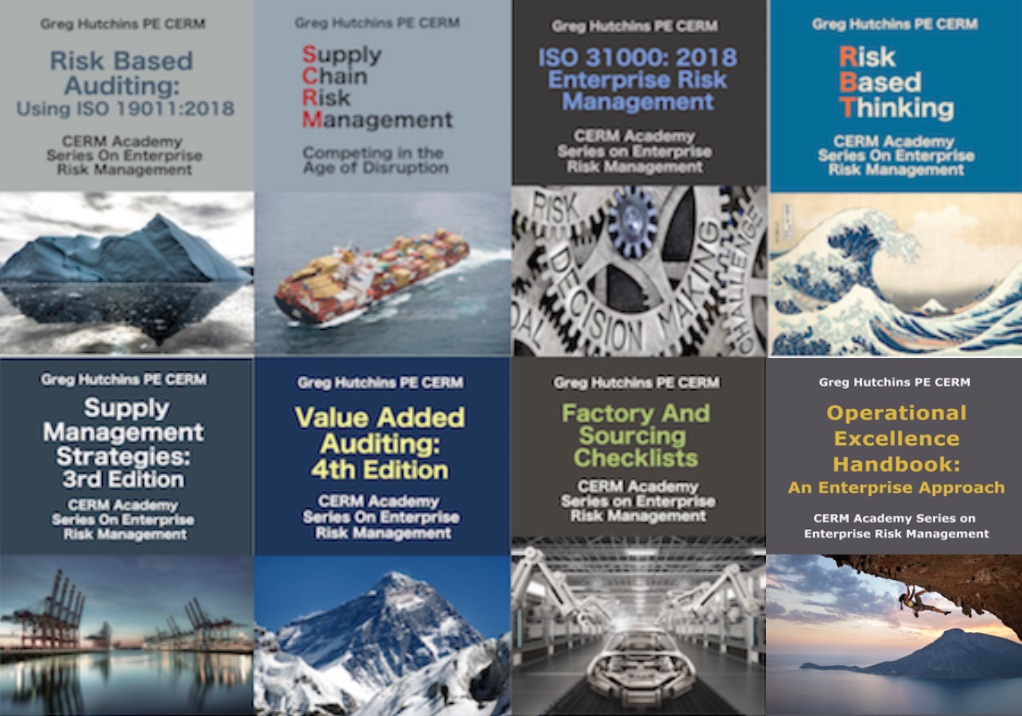 All companies, big and small, are becoming VUCA-sized. What do we mean? Black Swan events – high consequence and low likelihood events – should be relatively rare but seem to be arising more frequently, such as 100-year storms, volcanic eruptions, oil spills, economic meltdowns, and the list goes on. One thing is crystal clear. The challenges are eclipsing our managerial, technical, and operational capabilities to address today’s problems. VUCA is impacting both organizations and people.
All companies, big and small, are becoming VUCA-sized. What do we mean? Black Swan events – high consequence and low likelihood events – should be relatively rare but seem to be arising more frequently, such as 100-year storms, volcanic eruptions, oil spills, economic meltdowns, and the list goes on. One thing is crystal clear. The challenges are eclipsing our managerial, technical, and operational capabilities to address today’s problems. VUCA is impacting both organizations and people.
VUCA for many companies started during the recession after October 2008. Pre VUCA was largely characterized by stable processes and systems. We are now moving from a linear world of known problem solving and clear decision making to a dynamic world of sense making, risk based decision making in VUCA land.
VUCA SOLUTION
Volatility, uncertainty, complexity, and ambiguity are challenging all organizations. Period. A recent survey of 1,500 chief executives by IBM concluded:
“Global complexity is the foremost issue confronting these CEOs and their enterprises. The chief executives see a large gap between the level of complexity coming at them and their confidence that their enterprises are equipped to deal with it.”
Source: May 19, 2010, Business Week.
A commonly favored solution to managing VUCA s enterprise risk management (ERM). Harvard Business Review (HBR) recently focused on risk management and concluded:
“I think we now live in an era when many of the concerns in running organizations are being reframed in terms of risk, which suggests that risk professionals are likely to rise to the top.”[i]
Source: October 2009, Harvard Business Review.
The above data point to the importance of risk management and the criticality for the quality profession at the individual level to learn risk management principles/processes/tools and for organization to risk-control their processes. Let’s now look at individual and organizational VUCA impacts.
INDIVIDUAL PROBLEM SOLVING AND DECISION MAKING IN TODAY’S VUCA WORLD
We instinctively know that organizations and people need new problem solving and decision-making tools to address what pundits call today’s ‘New Normal’ or ‘Reset.’ Basically, things that were normal or expected, are no longer considered normal, especially after 2008. Think of it in terms of your business or your personal life. Look at the changes occurring in your work, family, and even career. They are huge changes that may be irreversible. And, the rate of change is increasing.
We believe that most or all of your problem-solving and decision-making is changing to address VUCA in terms of risk-benefits. Let’s look at old school problem solving. The basis for our decision making was based on well-known assumptions: the problem we were trying to solve was known; the problem solving and decision making processes were well known and accepted; the boundary conditions were known; all or least most of the critical inputs and assumptions could be identified; and probably most importantly the cause and effect decision process would lead to one right or optimum solution. VUCA changed all of this.
QUALITY’S VUCA ROLE
Quality does not specifically address VUCA. But it is much easier to manage VUCA when quality is in place; in other words, when processes are stable and capability is assured, i.e. there are continuously managed risk-controls in place. Building on an effective quality deployment, organizations can get an early jump by incorporating risk management into their strategic planning and operational processes. External and internal risk factors will be identified, addressed and continuously monitored and minimized. In this way, organizations will be better prepared to handle rapid changes and unexpected challenging events.
Addressing risk, organizations will strengthen not only operations, but also the product and service offerings because the potential harm to the environment and society (communities, customer, employees) will also be identified, managed and minimized. In doing so, organizations ensure their long-term survival in a VUCA world.
Quality professionals are well positioned to expand their skills to risk management. Quality incorporates variation management, maintainability, and reliability, which are key elements of risk management. Systemic thinking and process thinking along with ability to use tools like SWOT analysis, FMEA, Capability Studies, QFD, Statistical Process Controls, etc, form a strong foundation for VUCA management.
For quality professionals, it is a natural evolution to incorporate risk management in their work. There is an increased awareness regarding risk management: even if the quality compliance is very high, one gap in risk management could have dramatic impacts. Any process has to be effective, efficient, well measured and monitored for key performance indicators and key risk indicators. The shift from quality to risk management is a ‘must’ in this VUCA world. Quality professionals who recognize this fact and expand their skills to incorporate risk management will be very well positioned in the job market for the VUCA years to come.
New school problem solving and decision making more often will involve the following: the problem we are trying to solve is more vague with many unknowns; new and flexible decision making processes need to be developed to deal with VUCA; boundary conditions are porous and dynamic; critical problem solving inputs and assumptions are changing even as the problem is being solved; cause-effect relationships are weak because the problem definition and solution change as the problem is being solved leading to a number of possible solutions.
Another critical issue is how are we going to address VUCA? We’ve talked with many people including psychologists, who see this practice area growing. There seems to be tacit agreement that people need to reframe their expectations and needs to the ‘new normal.’ What does this mean? One conclusion is that old expectations make way to new expectations based on what we are all confronting. One solution is to understand that VUCA is presenting new opportunities to capitalize. When the answer to VUCA is responding and not reacting, there is the benefit of the innovation opportunities that VUCA is fostering[ii]:
ORGANIZATIONAL AGILITY
In today’s competitive environment, organizational agility to respond to VUCA becomes more important. Organizational agility encompasses a number of elements including the ability to innovate, collaborate, and manage risks. In other words, the VUCA responsive organization is an agile organization.
An agile organization is characterized by the following:
- Has processes to recognize and address VUCA that can adversely impact society its products and operations.
- Has processes to ensure conservation of natural resources through effective supply chain management practices.
- Can assess and enhance key compliance processes, measures, and goals for achieving compliance and surpassing regulatory and legal requirements and the risks associated with products and operations
- Has integrated social responsibility practices into its strategy and daily operations.
- Can assess and enhance its processes of how the organization contributes to the well-being of environment, social and economic systems.
- Can enhance how it supports and strengthens its key communities.
A critical element of the agile organization is the ability to respond to VUCA. What does this mean? The agile organization can look around corners. The agile organization tries to look at the future and respond to VUCA change. Agility is built upon risk management, innovation and collaboration.
Let’s look at collaboration, another critical component of agility. Collaboration or teamwork can foster innovation and product development. Team work is essential: everybody in the organization, all the process participants, directly involved in day-to-day operations, are in the best position to actively participate to manage risk and innovate. The leaders’ responsibility is to allow and foster a culture of organizational agility. This means critical risks are assessed, the right controls are in place and monitored in critical processes. Also, employees know their roles in achieving strategic goals and view daily progress toward accomplishing them and actively participate in managing risks. They are empowered to continuously improve and make the right risk based decisions. It’s interesting that the above characteristics of an agile organization are also characteristics of a process-managed organization, which is one of the goals of managing quality.
No organization or person can predict or the future. So, how can an organization scan the future and glean understandings. Many companies are developing enterprise risk management programs to assess and respond to VUCA. A risk management system is very similar to a quality management system (QMS).
[ii] Institute for the Future: http://future.iftf.org/2007/08/get-there-ear-1.html
Bio:
Greg Hutchins PE and CERM (503.233.101 & GregH@QualityPlusEngineering.com) is the founder of:
CERMAcademy.com
800Compete.com
QualityPlusEngineering.com
WorkingIt.com
He is the evangelist behind Future of Quality: Risk®. He is currently working on the Future of Work and machine learning projects.
He is a frequent speaker and expert on Supply Chain Risk Management and cyber security. His current books available on all platform are shown below:
